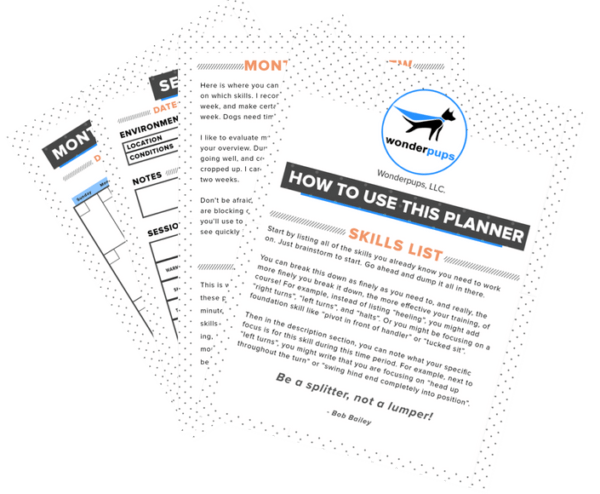Bob Bailey says “be splitter, not a lumper. “ And that is the ideal to which we all aspire. However, many of us are lifelong members of Lumpers Anonymous, and chronically struggle to find ways to “split “our behaviors as we train them and avoid the pitfalls of lumping.
This is not easy!
Part of the challenge is knowing exactly what is meant by the word splitting. When someone tells you to split the behavior, what do they mean? What exactly is a lump? These are things that are easy to say, and we usually agree are very good ideas, but what does that actually mean in terms of practical application? A large part of this problem is that splitting may refer to many different factors.
Generally, splitting means to break down the specific components of the behavior-environment into smaller and smaller pieces until you can’t break it down anymore.
Behaviors are complex. There are many, many components that go into them even something as simple as sit. Trust me. I can go on and on about the intricacies of teaching sit… I am a scintillating dinner guest!
If the behavior is a blueberry muffin, we can easily see that we could separate it into the blueberry and muffin components.

But then the muffin itself can break down into its ingredients flour, eggs, butter, etc. (I’m not a baker, so I’m already sorry that I’ve chosen this metaphor). But then the flour can be broken down into its constituent carbohydrates and proteins. And those carbohydrate molecules break down into atoms, and holy cow, atoms break down into all kinds of subatomic particles. At this point my knowledge of physics is been exhausted, but I know you can find out more if you are so motivated.
But hopefully you followed me that far. So we can break a complex behavior down into its pieces and each of those pieces can be broken down even further and each of those pieces can be broken down even further than that. We are searching for the behavioral quark (or whatever the newest tiniest particle they have discovered is called).

How do we identify pieces of behavior?
You noticed above I use the term “behavior-environment” (which I learned from the awesome Susan Friedman), because behavior analysts use that term as one word, owing to the fact that you can never truly separate behavior from the environment. There is always interaction and that’s really what defines the behavior.
However, when we start to think about splitting, that is one of the places where we can start to separate things out in order to form a practical training plan. The first three splits that I make when evaluating or splitting a behavior (just the tip of the iceberg really, but at least gives me a starting point to structure my plan):
1. Environmental conditions
2. The motor pattern of the dog
3. Relative conditions of the handler
I think many trainers recognize the application of breaking down the environmental conditions. Those tends to be relatively straightforward. The number, challenge level, and intensity of the distractions are things that I would include in this category.
The physical action of the dog is often overlooked, but I think a good place to start when learning to see splits in your behavior. Motor patterns are observable and concrete. When you know what to look for, you can train your brain to see these splits. This is one of the reasons I love video… I can watch a movement of a dog in slow motion, and pull out individual frames in that movement cycle, which gives me a good starting point for my shaping plan.
And of course, as the handler, I am always part of the equation. So my position, movement, distance, and posture are all elements to consider. How does my position affect this behavior? Does my movement make it easier or harder? Is some aspect of my position inducing this behavior (as a prompt or cue), and if so, is that something I want in the final version, or do I need to fade it?
When I start to break up the big picture of the behavior into these chunks, I can start to refine those chunks into actionable training tasks. But this is a place to start to organize my plan, so that I don’t feel overwhelmed.
